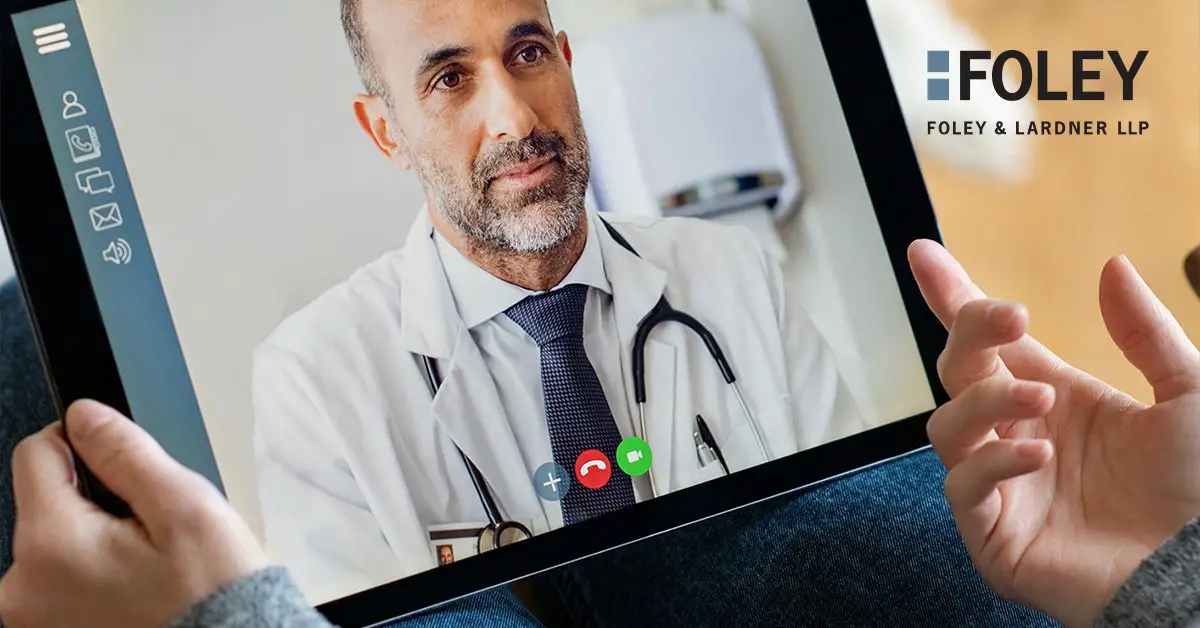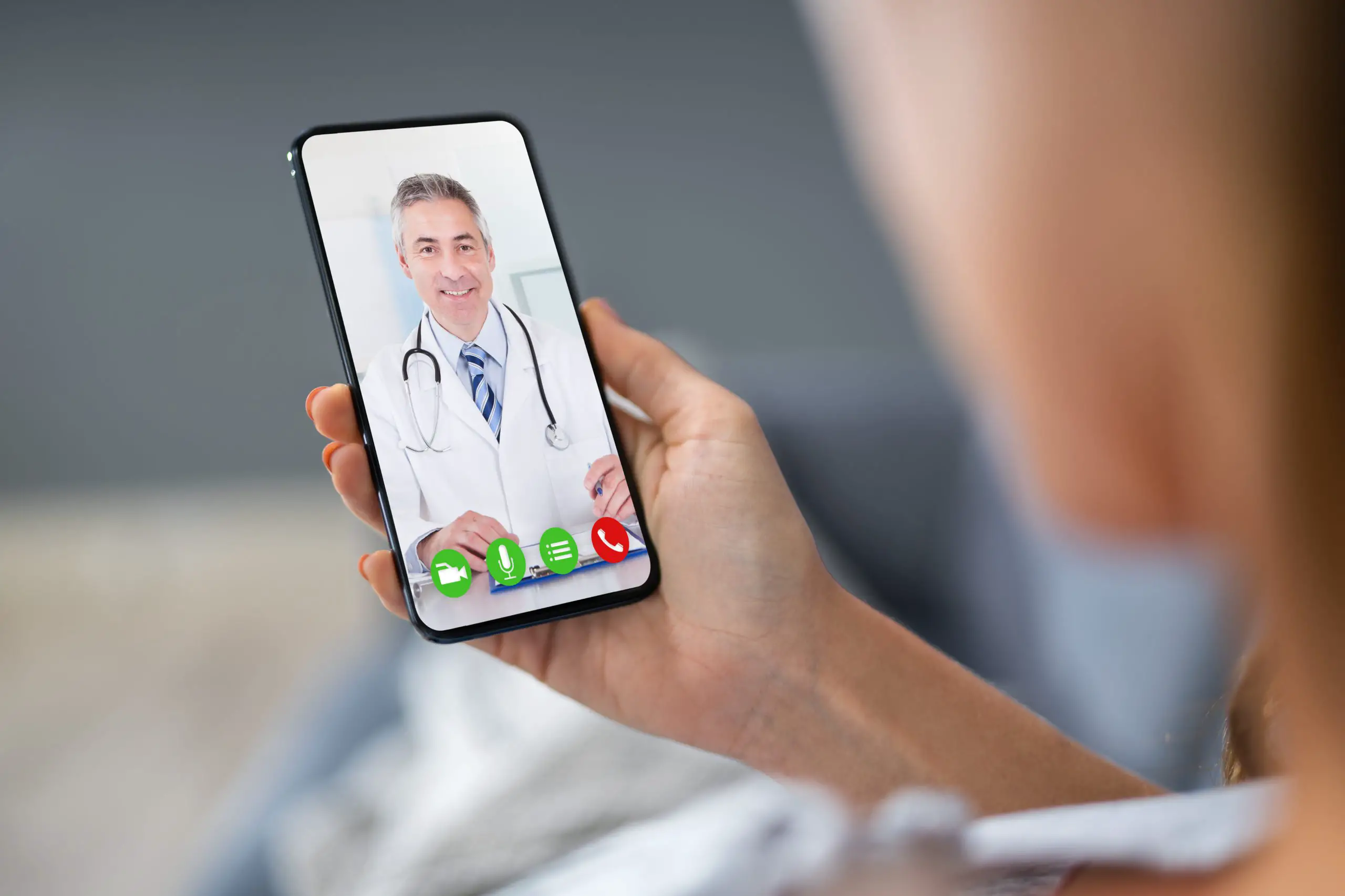How Long Will Practitioners Be Able To Bill Using These New Flexibilities
Billing for the expanded Medicare telehealth services, as well as for the telephone assessment and management, telephone, evaluation and management services, and additional flexibilities for communications technology-based services are effective beginning March 1, 2020, and through the end of the PHE.
Medicare Advantage Plans Have Much More Flexibility Than Traditional Medicare
All the guidelines and restrictions weve listed above are for billing telemedicine through traditional Medicare. Medicare Advantage plans under a commercial payer have complete flexibility to cover telemedicine however they want! This means, Advantage plans may cover telemedicine for your patient and not have any of those restrictions on what qualifies as an eligible originating site. Call the payer and ask what theyll cover and what their telemedicine guidelines are.
Expands List Of Telehealth Practitioners
Prior to COVID-19, only physicians, nurse practitioners, physician assistants, and other specified providers could deliver Medicare covered telehealth services. Under the new law, the list of telehealth practitioners will continue to be expanded to include qualified occupational therapists, physical therapists, speech language pathologists, and audiologists for 151 days past the end of the PHE.
You May Like: What Is A Medicare Advantage Medical Savings Account
Medicare Will Pay For Telehealth Provided At Home
Perhaps the biggest change provided by the Act is the new definition of originating site to mean any site in the United States at which the eligible telehealth individual is located at the time the service is furnishedincluding the home of an individual. Before the PHE, the statute restricted Medicare coverage to services delivered to patients located at hospitals and other provider facilities . The PHE flexibilities waived the originating site requirement for telehealth services, allowing providers to receive Medicare payment for delivering telehealth services to patients at home. The new law continues this flexibility for 151 days past the end of the PHE.
Medicare Proposes New Changes For Telehealth Services In 2022

Editors Note: This article is the third of a four-part series discussing specific telemedicine and digital health features in the 2022 Medicare Physician Fee Schedule proposed rule. Read part 1 of this series here and read part 2 here.
On July 13, 2021, the Centers for Medicare and Medicaid Services released an advance copy of the calendar year 2022 Medicare Physician Fee Schedule proposed payment rule, to be published on July 23, 2021. While the proposed rule introduces some new virtual care services , CMS rejected all requests to permanently add new telehealth services next year.
This article discusses: 1) the current state of Medicare telehealth services 2) requests for new telehealth services 3) extending the timeframe for Category 3 temporary codes 4) a new permanent code for virtual check-ins longer than 10 minutes and 5) whether CMS should continue allowing direct supervision via telemedicine.
Also Check: Can You Get Dental On Medicare
What Medicare Part B Covers
Medicare Part B covers some telehealth services. Parts A and B of Medicare are sometimes referred to as Original Medicare.
You will get the same treatment in a telehealth appointment as an in-person outpatient appointment. The following are examples of telehealth services that it covers:
- Visits to the office.
- Nutritionists who are licensed.
- Social workers in clinical settings.
Telehealth services are available from the comfort of your own home in some cases while in other cases, youll need to visit a medical facility.
A Hindrance To Accurate Safe Assessment
This requirement in section 123 is at odds with providing a safe environment in which to establish a positive client-clinician relationship. Especially now during the pandemic, clients are presenting with anxiety related to contracting the virus. Sitting in a small office, provider and client sitting at least six feet apart for 50 minutes with masks on, makes little sense. An integral part of the initial assessment, clinicians depend on visual cues from client facial expressions that are largely hidden by a mask. Moreover, providers wearing masks will have a more difficult time conveying warmth and empathy so critical to establishing a connection in the first session. Many times clients are in emotional pain, crying and blowing their noses, adding to the potential for viral spread. Many providers offices are outfitted with comfortable fabric chairs that dont allow for thorough cleaning between clients, making the environment potentially riskier.
Also Check: How Often Does Medicare Pay For Diabetic Foot Care
Extension For Fqhcs And Rhcs
Prior to the pandemic, federally qualified health centers and rural health clinics were limited to serving as an originating site for telehealth services. The proposed legislation would extend flexibilities put into place by the CARES Act, allowing FQHCs and RHCs to serve as distant sites for an additional 151 days after the expiration of the PHE.
Who Should Use Telehealth
If you dont need to see your provider in person, you should book a telehealth appointment. Virtual appointments are ideal if you have mild symptoms or you need only routine care, such as reviewing the results of recent lab tests, discussing whether or not to refill a medication or checking in with your doctor on management of a chronic condition.
Telehealth appointments also work well for treating many mental health issues and for screening patients with mild COVID-like symptoms to determine if they need further, in-person care.
You May Like: What Is Difference Between Medicare Advantage And Supplement
Providing Noncovered Audiology And Speech
Medicares temporary coverage of telehealth services means that audiologists andSLPs may no longer enter into a private pay arrangement with Medicare beneficiaries for thoseservices that are now included on Medicares telehealth list. Clinicians may continue to accept private payments from Medicare beneficiaries for services not included on the telehealth list. However, if Medicare adds more services to the approved telehealth list, enrolled Medicare providers must reimburse their patients for those services and submit claims to Medicare for payment. Unenrolled providers must also reimburse their patients, but may not submit claims to Medicare for reimbursement and may not enter into private pay agreements with Medicare beneficiaries for covered services.
Get The Latest Advocacy News
Stay up-to-date on how the AMA is fighting for physicians in the courts and legislature with your personalized news feed on the AMA Connect app.
There really was no let up from day one, Todd Askew, the AMAs senior vice president of advocacy, said during a recent episode of the AMA Moving Medicine series. It was just a tremendous, tremendous year of important items and accomplishments from January straight through December.
Looking ahead to 2022, rebuilding physician payment models of care presents the biggest opportunity for AMA advocacy, noted Askew. It’s not going to be a slam dunk and it’s not going to be done in one year, but if were going to start on this journey, we’ve got to sit down and get going and this is the time to do it, he said.
Related Coverage
Don’t Miss: Does Medicare Have A Limit
How Does Telehealth Work
Weve established that Medicare covers telehealth services. The next question many people have is, how does telehealth work?
The process typically starts with a 5-10 minute virtual check-in, which allows healthcare providers to decide if an office visit is needed. This is ideal considering roughly 80% of COVID-19 cases are mild or asymptomatic, according to the World Health Organization, which means patients can be assessed without the risk of an in-person visit.
In addition, people who need non-COVID-19 related attention can do so from the comfort of their home, rather than turning waiting rooms and ERs into breeding grounds for new cases.
Along with social distancing, telehealth likely played a key role in making sure our healthcare systems did not get overwhelmed during the beginning stages of the pandemic. Now, with cases spiking and ICU beds near capacity in some hospitals, telehealth services will once again be in demand.
Does Medicare Pay For Cpt Code 99441

codes 99441MedicarecodesMedicare
. Just so, does Medicare pay for telephone services?
A: No, UnitedHealthcare Medicare Advantage will not reimburse telephone services, since they do not involve direct, in-person patient contact. A: Telehealth services are live Interactive Audio and Visual Transmissions of a physician-patient encounter from one site to another using telecommunications technology.
Similarly, how Much Does Medicare pay for telehealth? You pay 20% of the Medicare-approved amount for your doctor or other health care provider’s services, and the Part B Deductible applies. For most telehealth services, you’ll pay the same amount that you would if you got the services in person.
Similarly, you may ask, what is procedure code 99441?
CPT®99441 in section: Telephone evaluation and management service provided by a physician to an established patient, parent, or guardian not originating from a related E/M service provided within the previous 7 days nor leading to an E/M service or procedure within the next 24 hours or soonest available appointment.
How Much Does Medicare pay for 99211?
The benefits of 99211Specific payment amounts will vary by payer, but the average unadjusted 2004 payment from Medicare for a 99211 service is $21. This means that only five 99211 encounters with Medicare patients in a week will result in over $5,000 per year for a practice.
Recommended Reading: Does Medicare Pay For A Registered Dietitian
Veterans Health Administration And Tricare
The VHA currently operates the world’s largest telehealth program, serving more than 50,000 veterans in 2011.23 Patients enrolled in the VHA program, most of whom have chronic conditions such as heart failure, hypertension, diabetes, or posttraumatic stress disorder, receive free telemonitoring equipment and services from care coordinators who teach them self-management. The VHA has worked to expand access to telehealth, implementing a 2012 change in policy to eliminate copays for most telehealth services,24 and does not set any rural requirement. The VHA model has proven so successful that researchers in the United Kingdom are urging the country’s National Health Service to model its planned telehealth program after the VHA.25
Telemedicine is also a TRICARE benefit. A telehealth policy set by the U.S. Department of Defense in 2003 does not limit the provision of telehealth services only to rural areas,26 and a subsequent telehealth guidebook issued in June 2011 does not appear to set any originating site restrictions.27
How Much Does Telehealth Cost
Under Medicare, telehealth visits are considered the same as in-person visits.
So, for a telehealth visit, youll likely pay the same amount you would have paid if you saw your doctor in person. Those with Original Medicare are responsible for paying their Part B deductibleas well as 20% of the Medicare-approved amount for that service.9
For Medicare Advantage plans, beneficiaries would be subject to paying the plans designated cost-sharing.
During the pandemic, though, some healthcare providers are reducing or waiving fees for telehealth visits, especially if youre seeing your doctor for screening for COVID-like symptoms. Check with your provider for the exact costs.
Read Also: What Is Medicare Plan G Supplement
Special Coverage Due To Covid
As of March 2020, there are many telehealth services that were previously uncovered by Medicare that are now covered. As long as the purpose for your appointment is deemed medically reasonable, you are covered under Medicare Part B. Some health care services are even choosing to reduce their fees or waive them entirely throughout the pandemic.
Medicare Part B Will Cover Some Telehealth Services
Medicare Part B will cover telehealth services like routine office visits, psychotherapy sessions and consultations if they are provided by an eligible provider who isnt at your physical location. Medicare Part B will also cover telehealth services to enable a rapid diagnosis, evaluation and treatment of symptoms for acute stroke. Telehealth services from home are also covered for people who are being treated for substance abuse or co-occurring mental health disorders.
Always check with your provider to ensure the telehealth service you want is covered before using a service.
NOTE: As of 2020, Medicare Advantage plans may offer additional telehealth benefits not covered by Part B. Benefits will vary by plan and provider, may be available from a variety of health care providers, and can be used at home versus going to a health care facility.
You May Like: What Is Msp Qualified Medicare Beneficiaries
What Medicare Part C Covers
Part C of Medicare is also known as Medicare Advantage and private insurance companies sell part C plans. It provides coverage similar to original Medicare, but with the possibility of additional benefits.
Part C will undergo changes in 2020, that may allow it to provide more telehealth benefits than original Medicare. Increased access to telehealth benefits from home, rather than requiring a visit to a healthcare facility is one of these changes.
Depending on your Part C plan, you may be eligible for additional benefits. Check your plan to see what kind of telehealth services are available.
Congress Extends Telehealth Flexibilities: 7 Things You Need To Know
The Consolidated Appropriations Act, 2022 , was passed by the U.S. House and Senate on March 9th and 10th, 2022, and signed into law by the President on March 15, 2022. The Act extends certain telehealth flexibilities for Medicare patients for 151 days after the official end of the federal public health emergency . Currently, the PHE will end in mid-April unless further extended.
Whether the PHE ends in April or at some later date, telehealth stakeholders will have a brief 5-month glide path for certain telehealth flexibilities instituted during the PHE. Legislation is essential because without Congressional action, CMS does not have the authority to allow most of the flexibilities to continue once the PHE ends. Thus, the newly adopted law will prevent a in Medicare when the PHE expires, while also enabling Congress to review further data from CMS and other sources regarding the use of telehealth to enact permanent policy changes.
Here are the key takeaways on how the new legislation will affect the telehealth industry:
Recommended Reading: Must I Take Medicare At 65
Does Medicare Pay For Online Counseling
Counseling is one of the services you may be able to receive coverage for. As with most services covered by Medicare, you will need to obtain documentation that shows your need for treatment. You will also need to make sure that the health care provider you work with is approved by Medicare or your Advantage plan so you avoid being rejected for coverage.
How Did Beneficiaries Access Telehealth Services

Among Medicare beneficiaries with a usual source of care whose provider offers telehealth appointments, the majority of those who had a telehealth visit since July 2020 accessed the service by telephone , compared to 28% who reported having a telehealth visit by video and 16% who used both telephone and video . This may be related to the fact that while more than 8 in 10 Medicare beneficiaries report having access to the internet , smaller shares say they own a computer or a smartphone .
There are notable differences by demographic characteristics in how beneficiaries have accessed telehealth services during the pandemic and the availability of technology that enables access to telehealth, for example:
Read Also: How To Register For Social Security And Medicare
Restrictions On Medicare Telehealth Coverage
In the past, Medicare has placed some restrictions on telehealth coverage.
For example, Medicare formerly covered telehealth services in only certain circumstances, including when a person lived in a rural area and was staying in a facility such as a skilled nursing home or hospital-based dialysis facility.
However, Medicare lifted many restrictions due to the Coronavirus Preparedness and Response Supplemental Appropriations Act, which became law in March 2020.
In the past, changes to the coverage of telehealth services were effective for a calendar year. The emergency legislation and coverage expansion in 2020 does not clearly state whether the changes are permanent.
As a result, a person may want to check with their healthcare professionals office if they want to continue to use telehealth for the foreseeable future.
Does Traditional Medicare Cover The Cost Of Telehealth Services
Yes. Telehealth services are covered under Medicare Part B. You typically pay 20% of the Medicare-approved amount for your providers services after you meet the Part B deductible. In 2022, the Part B deductible is $233.
Out-of-pocket costs may vary amid the pandemic. Providers have the flexibility to reduce or waive cost-sharing for telehealth visits during the COVID-19 public health emergency. That means your provider may not charge for all or some of your out-of-pocket costs.
Many Medicare Advantage plans also cover telehealth. These plans also may reduce or waive cost-sharing for telehealth visits during the COVID-19 public health emergency. Check with your insurer for details.
Also Check: How Much Does Medicare Part B Cost For A Couple
Is Any Specialized Equipment Needed To Furnish Medicare Telehealth Services
Currently, CMS allows telehealth services to be furnished using telecommunications technology that has audio and video capabilities that are used for two-way, real-time interactive communication. For example, to the extent that many mobile computing devices have audio and video capabilities that may be used for two-way, real-time interactive communication, they qualify as acceptable technology. More information is available on the HHS emergency preparedness website.
Provider And Facility Guidelines
Medicaid guidelines require all providers to practice within the scope of their State Practice Act. Some states have enacted legislation that requires providers using telemedicine technology across state lines to have a valid state license in the state where the patient is located. Any such requirements or restrictions placed by the state are binding under current Medicaid rules.
Also Check: How Is Medicare Irmaa Calculated
What To Do If You Support Counselors Getting Medicare Reimbursement
Write a letter to your elected officials about this issue today. Heres how:
